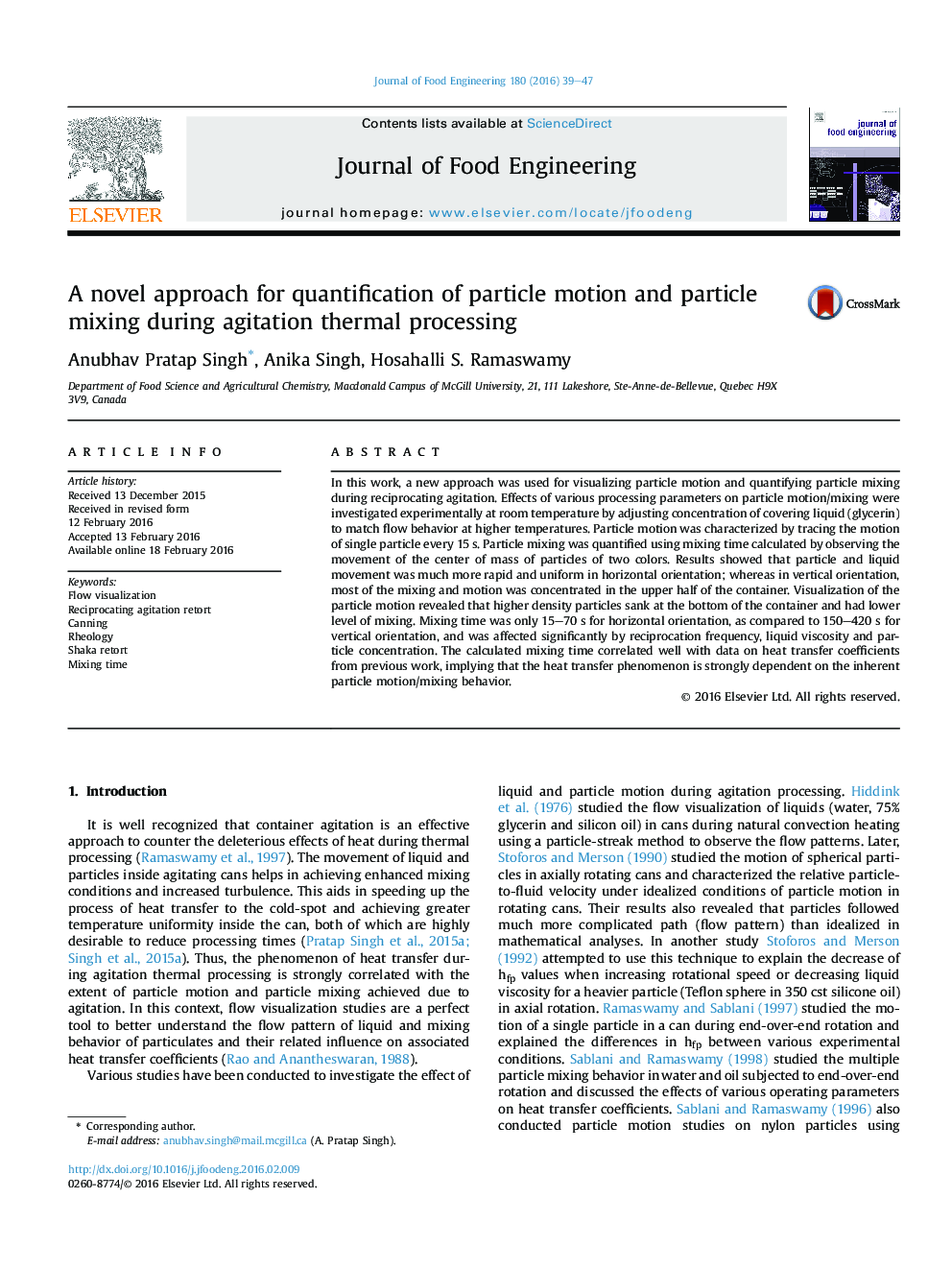| Article ID | Journal | Published Year | Pages | File Type |
|---|---|---|---|---|
| 222635 | Journal of Food Engineering | 2016 | 9 Pages |
•A new method was used for quantifying particle mixing during thermal processing.•Higher frequency agitation assisted rapid motion and uniform mixing of particles.•Particle motion/mixing phenomenon was strongly affected by the container orientation.•Liquid viscosity and particle density also influenced particle motion/mixing.•Mixing time correlated well with heat transfer coefficients.
In this work, a new approach was used for visualizing particle motion and quantifying particle mixing during reciprocating agitation. Effects of various processing parameters on particle motion/mixing were investigated experimentally at room temperature by adjusting concentration of covering liquid (glycerin) to match flow behavior at higher temperatures. Particle motion was characterized by tracing the motion of single particle every 15 s. Particle mixing was quantified using mixing time calculated by observing the movement of the center of mass of particles of two colors. Results showed that particle and liquid movement was much more rapid and uniform in horizontal orientation; whereas in vertical orientation, most of the mixing and motion was concentrated in the upper half of the container. Visualization of the particle motion revealed that higher density particles sank at the bottom of the container and had lower level of mixing. Mixing time was only 15–70 s for horizontal orientation, as compared to 150–420 s for vertical orientation, and was affected significantly by reciprocation frequency, liquid viscosity and particle concentration. The calculated mixing time correlated well with data on heat transfer coefficients from previous work, implying that the heat transfer phenomenon is strongly dependent on the inherent particle motion/mixing behavior.
